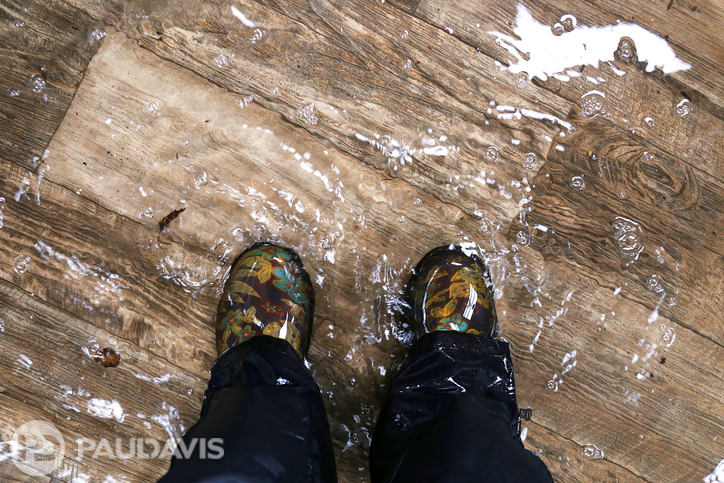
Soaked wallboard, inundated tile flooring, damp concrete, ruined documents and equipment – floods shock, devastate and disrupt businesses and residences. But the danger does not abate as flood waters or leaks recede. Mould – an insidious fungal growth – begins multiplying within 48 hours of inundation.
“Mould flourishes anywhere it finds good conditions for growth,” explains Sonny Bass, Paul Davis Technical Director and IICRC Instructor. “Soaked materials and enclosed areas create perfect conditions: high humidity, still air, temperatures between 4 and 38 degrees Celsius and wet, nutritious substrates. It’s absolutely critical that mould prevention and remediation begin as soon as possible after flooding.”
Bass fielded FAQs about why rapid mould remediation is so important to protecting property value and occupants.
We keep our premises very clean and have never experienced mould issues. Isn’t our property less likely to experience mould growth after a flood?
SB: Mould spores exist everywhere – with the possible exception of specially built industrial clean rooms. In fact, the International Space Station has had mould issues! Newer and scrupulously maintained properties may contain fewer mould spores. But even brand new, spic-and-span properties will quickly exhibit mould growth in the right conditions. Flood waters and leaks carry in additional spores, too.
What areas of the property are most likely to experience mould growth?
SB: Mould grows quickly on wood products, ceiling tiles, cardboard, wallpaper, carpets, drywall, fabric, plants, foods, insulation, and other organic materials. Mould also infiltrates many unseen areas of properties. Ductwork; heating, air conditioning and ventilation systems; roofing materials; wall sheathing; crawlspaces; the undersides of flooring and wall cavities are at high risk for mould growth after flooding.
Is mould dangerous?
SB: Many varieties of mould aren’t particularly dangerous. A small subset - black moulds, for example - is dangerous to human health. But any kind of mould growth is a big problem inside structures and for inhabitants. Mould smells bad, degrades indoor air quality, destroys materials it grows on and may be hazardous. The presence of mould encourages other bad actors, too, like viruses and bacteria.
Can we treat mould growth ourselves or prevent it from growing after a flood?
Unless it’s scrubbing off isolated surface patches of mildew in the shower, untrained people should not treat mould. Professionals evaluate the type of mould and treat it safely according to its hazard profile. Further, most lay people aren’t familiar with procedures that prevent mould from occurring or from returning once it’s eradicated. Experienced professionals like Paul Davis remove water, restore belongings, replace items like carpeting and drywall that can’t be salvaged, deploy industrial equipment for rapid drying and verify moisture levels with sophisticated monitors. These are all steps that most companies and homeowners need help with.
Worried about mould? Call Paul Davis because This Is No Time For Second Best®.
